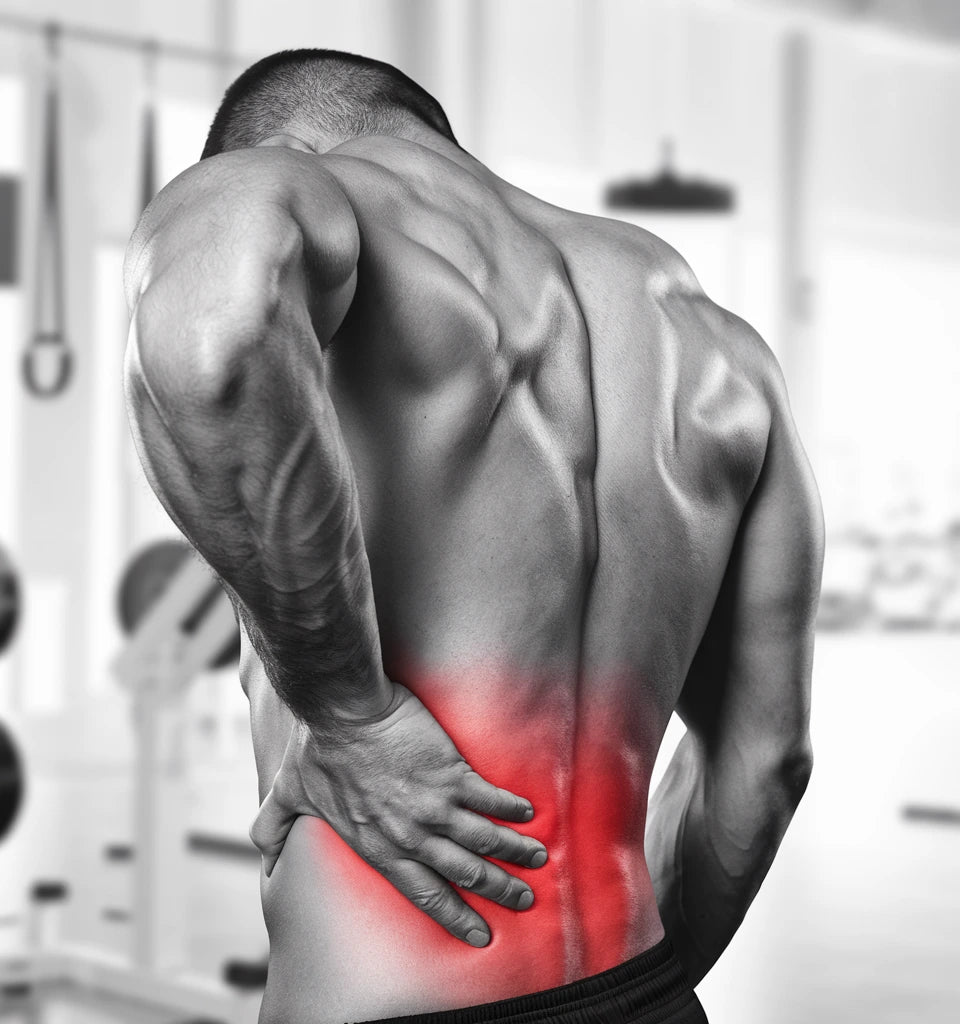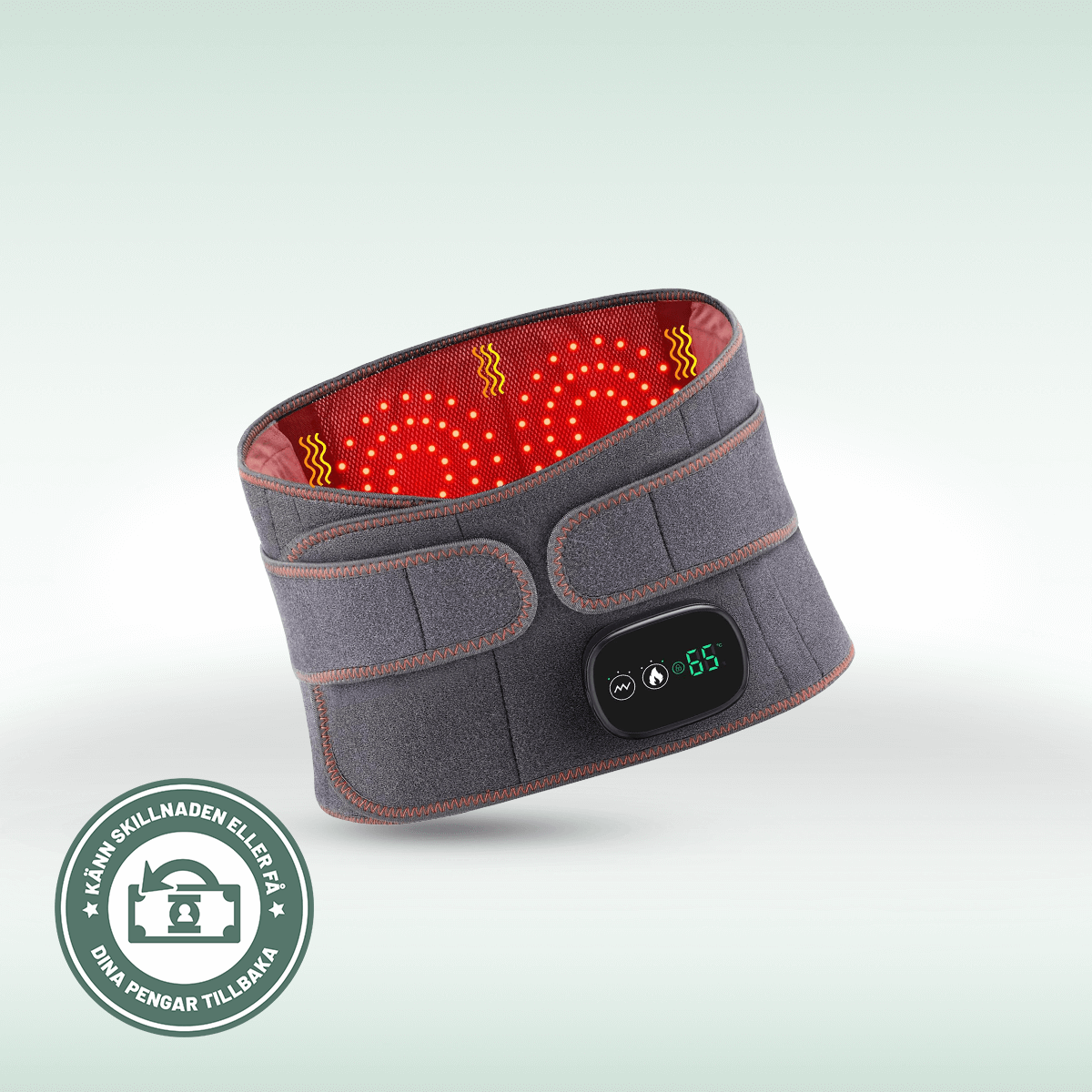Muscle Strain in the Back: Symptoms, Causes, and Treatment

A muscle strain in the back is a common injury that can cause pain, stiffness and limited mobility. This condition often occurs in the lower back but can also affect the thoracic or upper back. Here we go over muscle strain symptoms, the difference from a back muscle tear, causes and the most effective treatment methods.
What is Back Stretching?
A back strain is an overuse of the back muscles that leads to pain, stiffness and limited mobility. It often occurs with sudden movements or incorrect lifting techniques and is treated with rest, cold/heat therapy and exercises. When the muscle fibers in the back are subjected to excessive strain, they can be damaged – this can range from a mild back strain to a more serious muscle tear (partial or complete rupture). The discomfort can occur throughout the back but is most common in the lower back. Read more about similar conditions such as muscle tension in the neck.
Muscle strain symptoms – how to recognize the injury
Common muscle strain symptoms in the back include:
- Local pain and tenderness in the affected area
- Stiffness and limited mobility
- Muscle tension and cramps
- Pain that worsens with strain or certain movements
- In case of a muscle strain in the back: swelling, bruising and sometimes muscle weakness
Symptoms can vary depending on the extent of the injury. With a minor strain, you can often move, but with a rupture, even simple movements can be difficult.
Causes of Muscle Strain Back
Several factors can contribute to a muscle strain in the back:
- Sudden movements or twists
- Incorrect lifting technique
- Overload of the back muscles
- Bad posture
- Insufficient warm-up before physical activity
Muscle tears can also occur during explosive activity during sports, when the muscle is exposed to more force than it can handle, or through direct force against the muscle. Heavy lifting without proper technique is a common cause of back muscle injury. Movements during muscle stretching in the back that worsen the condition should be avoided – especially twisting and bending that put strain on the injured area. Similarly, pinched nerves in the back can cause similar pain-triggering movements.
Treatment of muscle strains and muscle tears in the back
A muscle strain or muscle tear in the back often occurs with sudden movements, heavy lifting, or overexertion. The injury affects the muscles in the lower back and can cause pain, stiffness, and difficulty moving normally. Early treatment helps reduce inflammation and speed up recovery.
Rest and relief
The first step is rest and reduced strain on the back to allow the tissue to heal.
BackComfort™ provides stability and support during the recovery phase, reducing the risk of further overload.
Cooling treatment
During the first 48–72 hours after the injury, cold is recommended to reduce swelling and inflammation.
Termoreliever™ can be used for effective cold therapy and pain relief during the acute phase.
Pain relief
If necessary, anti-inflammatory medications can relieve pain and discomfort.
Regular use of BackComfort™ can reduce the need for medication by providing relief and improving posture.
Gradual return to activity
After a few days, you can gently begin stretching and light exercises to restore mobility.
BackComfort™ provides support during this phase and helps stabilize the back during movement.
Important to consider
When straining your back, it is important to avoid sudden movements and heavy lifting during the first few days. If the pain does not improve after a week or if it worsens, you should contact a physiotherapist or doctor. After the acute phase, heat treatment with Termoreliever™ can stimulate blood circulation and accelerate the healing process.

Back Muscle Stretching Aids
BackComfort™ and Termoreliever™ offer several benefits for people with muscle strains in the back:
- Back Comfort™ provides support and stability to the spine.
- Termoreliever™ can be used for both heat and cold therapy
- The combination helps relieve pain and reduce inflammation
- The support from RyggKomforten™ can improve posture during the healing process
- Termoreliever™ can promote blood circulation and accelerate healing
Using aids like the BackComfort™ can significantly reduce the strain on the injured muscle and provide support when you need to be mobile. For optimal recovery, Termoreliever™ can be used to treat the affected area – first with cold to reduce swelling and later with heat to increase circulation in the area. These tools can help optimize the healing process and reduce the risk of scar tissue forming in a way that limits future mobility. Also suitable for other ailments, e.g. stiff back .
Conclusion
Back muscle strains can be painful and limiting, but with the right treatment and support, most people can recover well. By combining rest, appropriate treatment, and the use of supportive aids such as BackComfort™ and Termoreliever™, many people can effectively manage their symptoms and speed up the healing process. It is important to listen to your body's signals and gradually return to normal activity to avoid relapse. In case of recurring problems, it may be a good idea to also investigate whether there are signs of nerve pain in the back .
The recovery time for a back strain depends on the extent of the injury. Minor strains can heal in a few days to a week, while more serious muscle strains may require several weeks for full recovery. Professional rehabilitation may be necessary to rebuild muscle strength and mobility, especially for more serious injuries. Always follow your physical therapist's advice regarding rehab and when it is safe to return to full activity.
Frequently asked questions about muscle strain in the back
How long does it take to recover from a muscle strain in the back?
Recovery time varies, but with the right treatment, many people can experience improvement within 1-2 weeks.
Can I exercise with a muscle strain in my back?
Light exercise and gentle stretching can often be started after a few days, but consult a physical therapist for a customized program.
How do I use Termoreliever™ for muscle stretching?
Use cold therapy for the first 48-72 hours to reduce swelling, then heat therapy can be used to increase blood circulation and reduce stiffness.
Can Back Comfort™ prevent muscle strains in the back?
Yes, by providing support and improving posture, BackComfort™ can help prevent overload and reduce the risk of strains.
When should I seek medical attention for a muscle strain in my back?
If the pain is intense, persistent for more than a week, or if you experience numbness or weakness in your legs, you should consult a doctor. If you also have lower back pain, other causes may also be involved.

